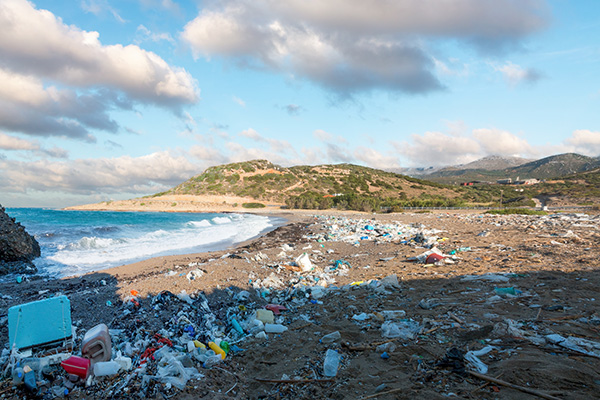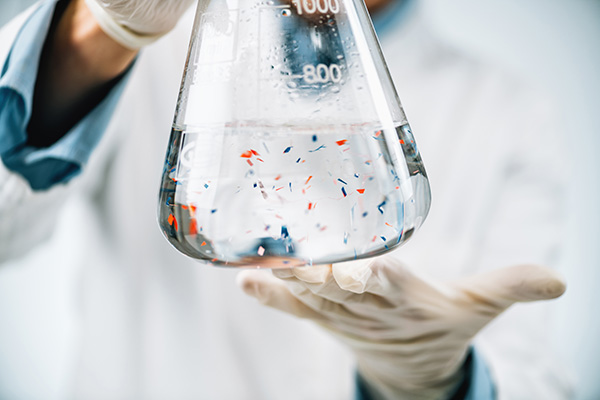What are microplastics?
Microplastics are tiny particles of plastic, generally less than 5 millimeters in size, which come from the degradation of larger plastic products or which are specifically manufactured in microscopic sizes. This category also includes nanoplastics, which are less than 1 micrometer in size and can be even more harmful due to their ability to infiltrate living organisms.
What products generate microplastics?
Microplastics can originate from a variety of sources. Among the products that generate them are:
- Single-use plastic containers and bottles, especially those made of polyethylene terephthalate (PET).
- Personal care products and cosmetics, such as exfoliants and toothpaste, contain plastic microbeads.
- Synthetic clothing, whose plastic fibers come off during washing and end up in water bodies.
- Car tires, which release plastic particles as they wear down.
- Plastic waste that, over time, degrades into smaller fragments.
What effects do they have on the environment?
Microplastics represent a threat to terrestrial and aquatic ecosystems. When ingested by marine organisms, they can accumulate in the food chain and affect biodiversity. In addition, they have been detected in the air, soil and drinking water, indicating their wide distribution and difficulty in eradicating them.
From the point of view of human health, studies suggest that these plastics can cross biological barriers and reach organs such as the heart, the brain and even the placenta. They are associated with metabolic disorders, insulin resistance and cardiovascular problems.

How can we eliminate microplastics from tap water?
Researchers at the University of Guangzhou in China have identified a simple and effective method for reducing the presence of microplastics in drinking water:
- Boil the water: Raising the temperature encourages the precipitation of minerals such as calcium carbonate.
- Let it cool: During this process, the microplastics become trapped in the mineral deposits.
- Filter the water: Use a stainless steel strainer to remove the precipitated solids, which contain the trapped microplastics.
This method is more effective in hard water, as the higher mineralization facilitates the precipitation of microplastics. However, even in soft water, the presence of these particles can be reduced by up to 25%.
The presence of microplastics in drinking water is a global problem that requires solutions at the industrial and regulatory level. However, adopting simple practices such as boiling and filtering water can help minimize daily exposure to these particles and their potential health effects.
Continue your professional training
The growing presence of microplastics in water highlights the importance of effective environmental management. Studying the Master’s Degree in Environmental Management and Auditing at our institution will provide you with the necessary tools to face these challenges, allowing you to contribute to the improvement of the quality of water and other natural resources, and play a key role in environmental sustainability.
Source:
The easy, effective and scientific trick to eliminate microplastics from tap water

